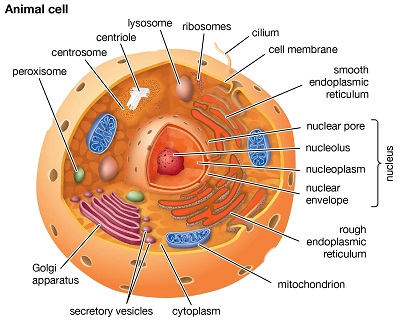Cell membrane Plasma membrane - Introduction, Composition, Function
Introduction to Cell membrane/Plasma membrane
Cell membrane, also known as Plasma membrane or plasmalemma, is a biological membrane that protects and separates the interior components of the cell from the outside environment. i.e. extracellular space.
It consists of a lipid bilayer and is made up of two layers of phospholipids with cholesterols that are interspersed between. It also maintains appropriate membrane fluidity at various temperatures. Membrane transportation is done by membrane proteins such as integral proteins while peripheral proteins that are attached to peripheral peripheral side of the cell membrane act as enzymes.
Composition of Cell membrane/Plasma membrane
Cell membrane/Plasma membrane is composed of numerous biological molecules – mostly lipids and proteins. However, it is not set as composition constantly changes depending on the environment as well as stages of cell development.
Lipids
Cell membrane/Plasma membrane is composed of three classes of lipids - phospholipids, glycolipids, and sterols. Although the amount of each lipid is variable, phospholipids are the most abundant (over 50%). Sterols make up 48% of lipids while glycolipids make up to 2% of lipids.
In most eukaryotic cells, Cell membrane/Plasma membrane composition is around half lipids and half proteins.
Carbohydrates
Cell membrane/Plasma membrane contains carbohydrates –glycoproteins (predominant), cerebrosides, and gangliosides. They are located on the surface of the cell and are important as cell-cell recognition in eukaryotes.
Carbohydrates recognize host cells, share information, and act as receptors for viruses to bind to cells.
Proteins
Cell membrane/Plasma membrane is largely composed of proteins i.e. approximately 50%. It consists of three main types – integral proteins, peripheral proteins, and lipid-anchored proteins. Integral proteins are amphipathic transmembrane proteins such as ion channels, proton pumps, and g-protein coupled receptors.
Ion channels allow inorganic ions such as sodium, potassium, calcium, or chlorine to diffuse down their electrochemical gradient.
Proton pumps are embedded in the lipid bilayer and function by allowing protons to travel through the membrane by transferring from one amino acid side chain to another i.e. as electron transport and generating ATP use proton pumps.
G-protein coupled receptor is a single polypeptide chain that is used in processes such as the regulation of ion channels, regulation of the production of cAMP, and cell-to-cell signaling.

Cell membrane/Plasma membrane (Source: Britannica)
Function of Cell membrane/Plasma membrane
Physically, the Cell membrane/Plasma membrane separates the intracellular components from the extracellular environment.
Anchors the cytoskeleton to provide shape to the cell, attaches to the extracellular matrix and holds to other cells to form tissues.
As it is selectively permeable, it regulates what enters and exits the cell i.e. transport of materials. Transport can be active transport or passive transport.
It’s functions include cell adhesion, ion conductivity, cell signaling,
Is an attachment surface for extracellular structures including glycocalyx (carbohydrate layer), and cytoskeleton.